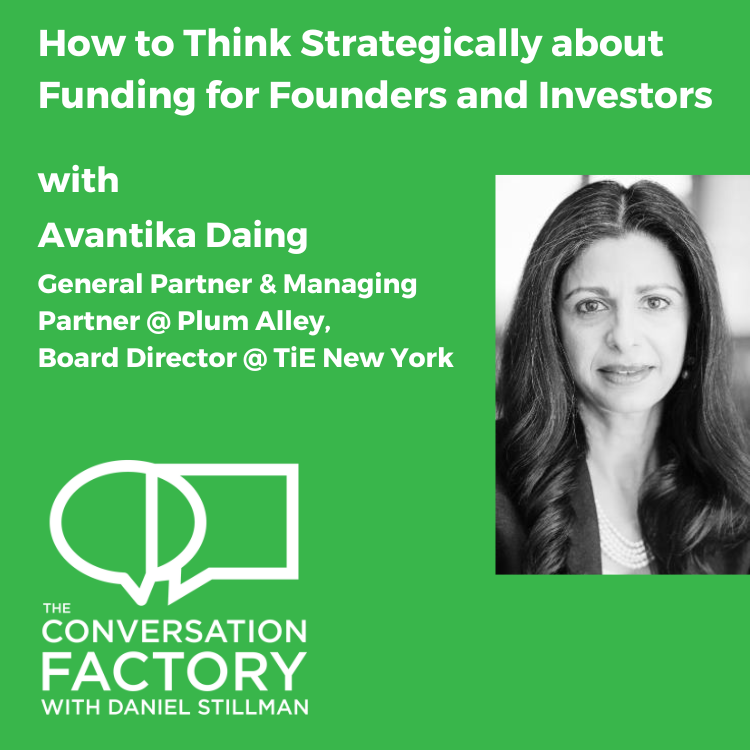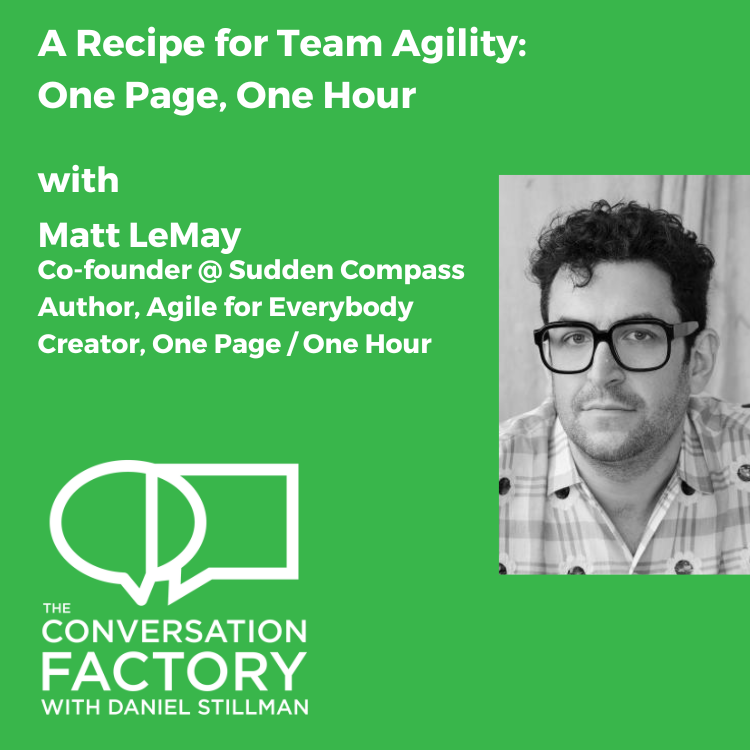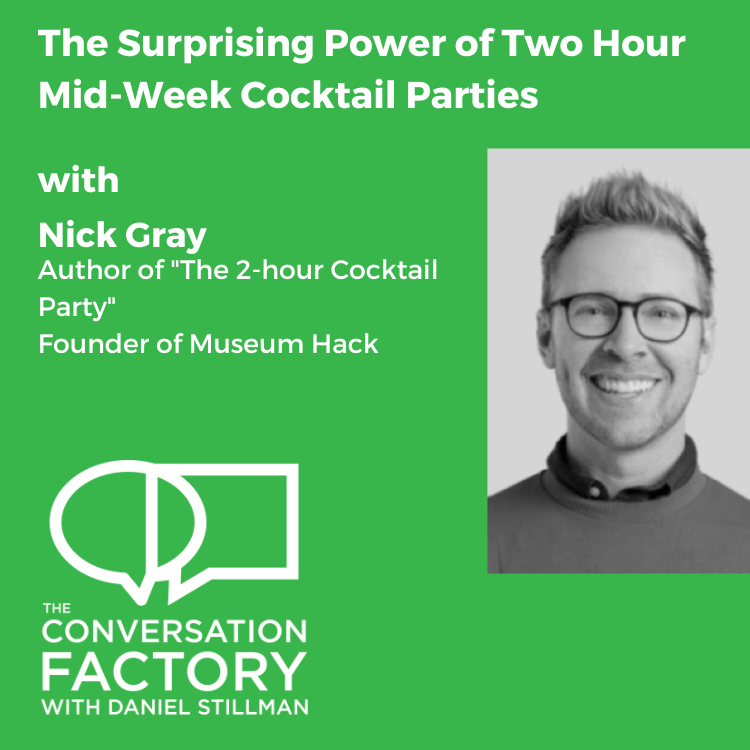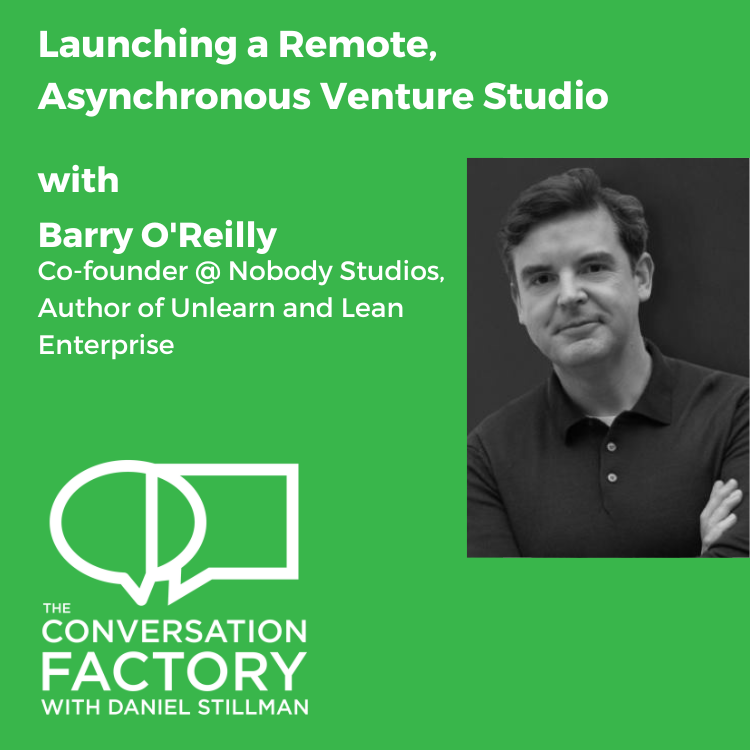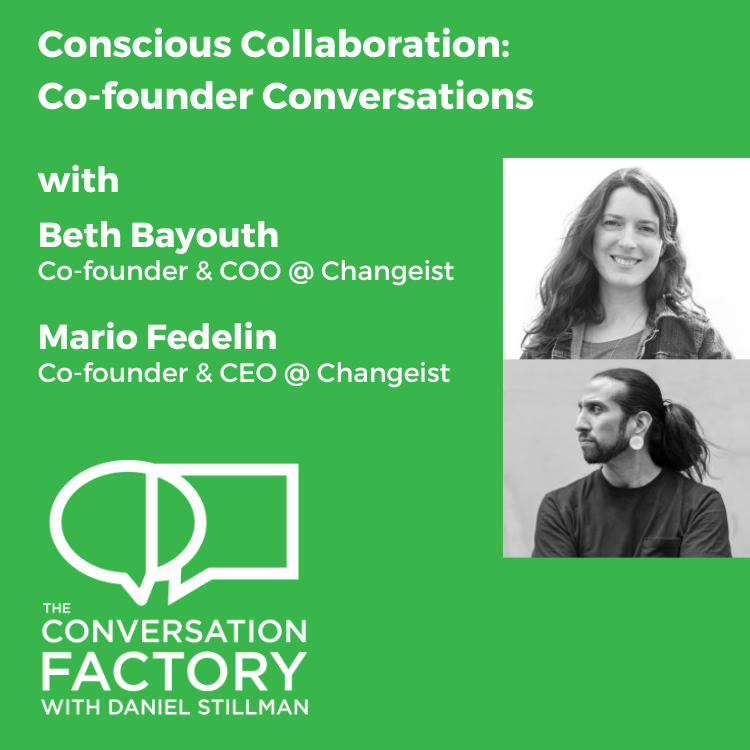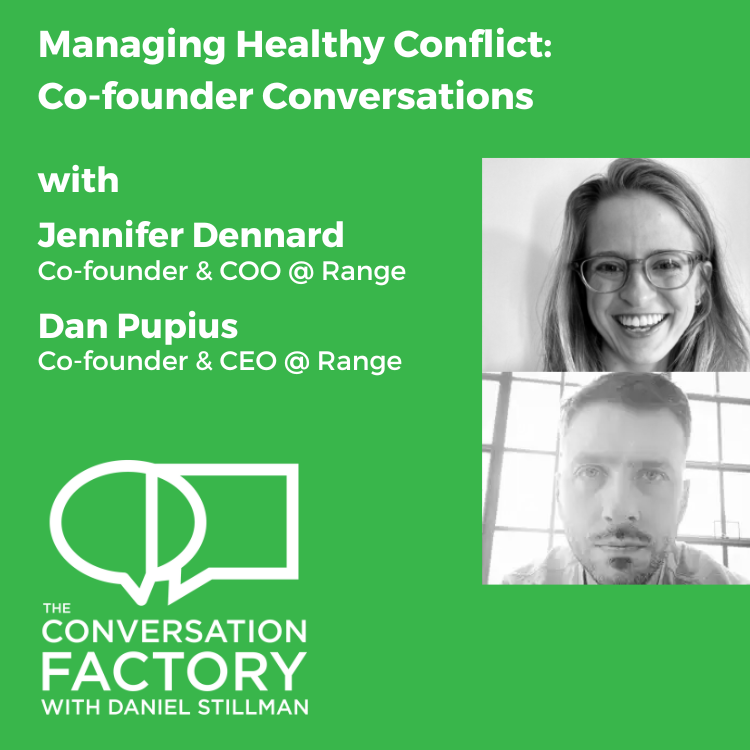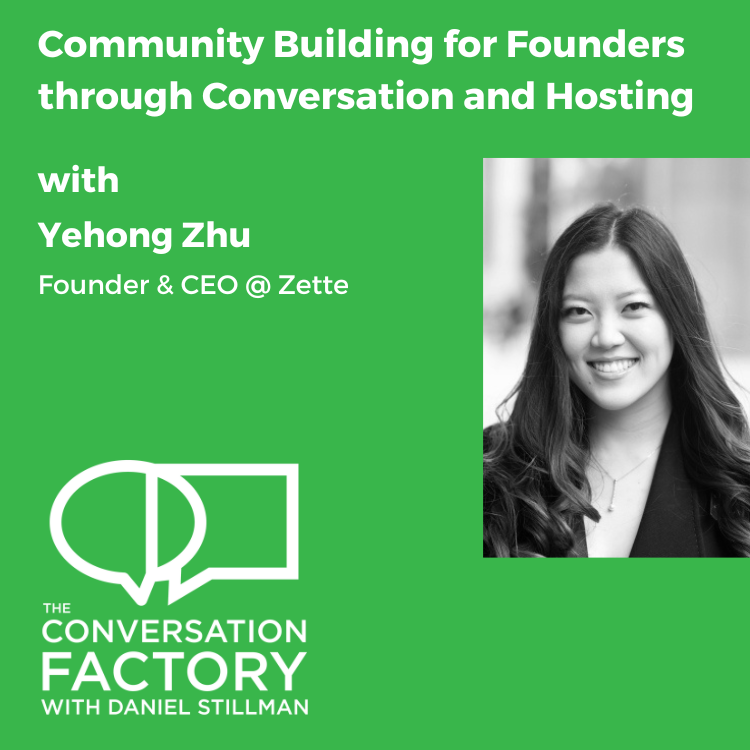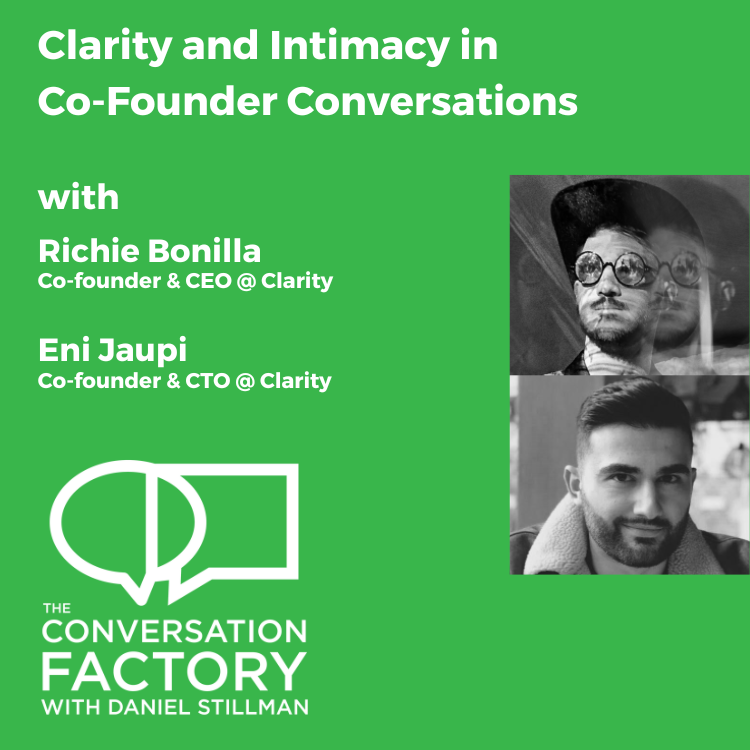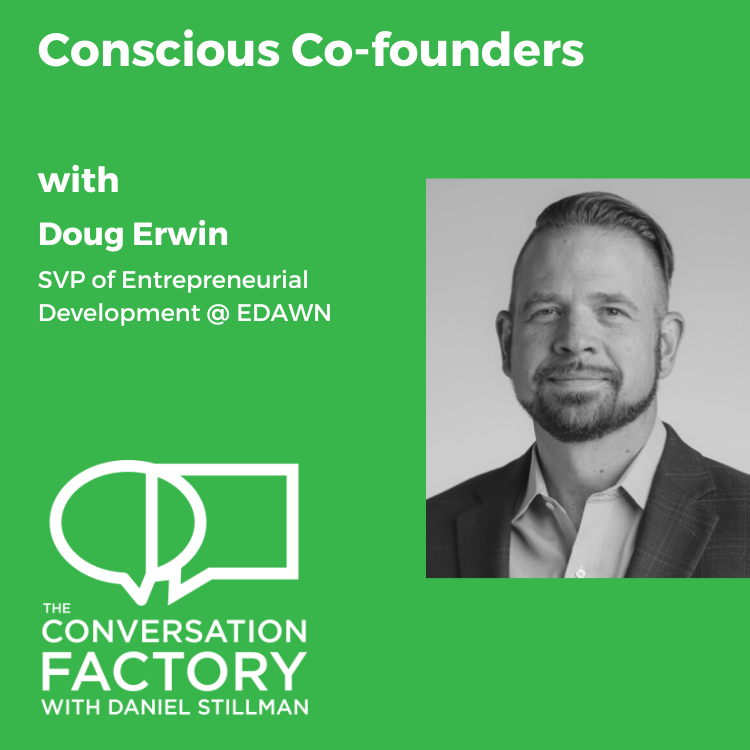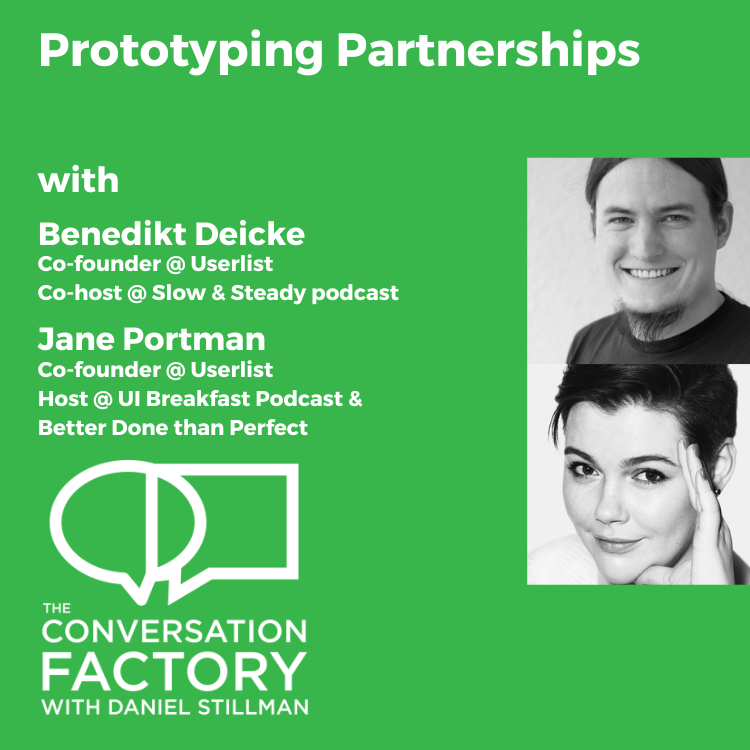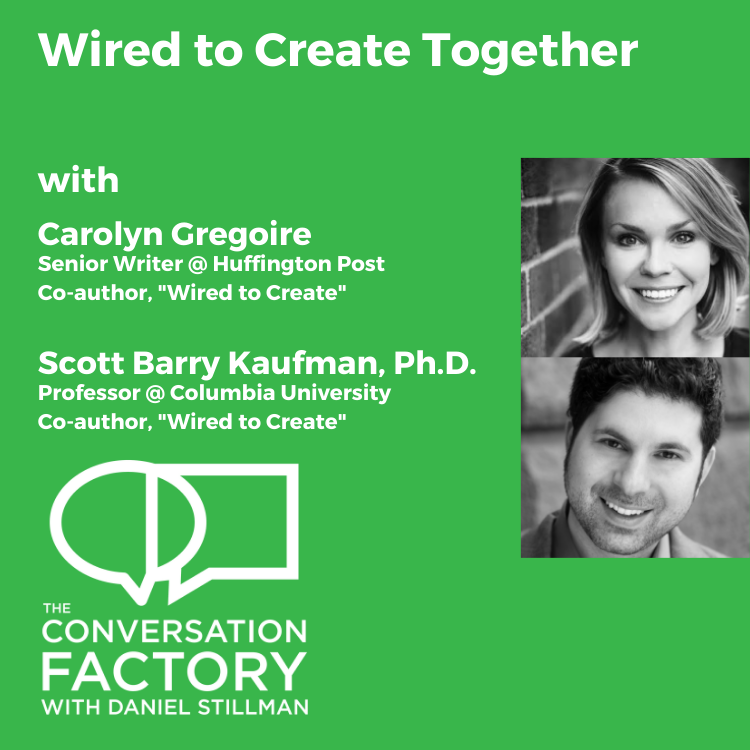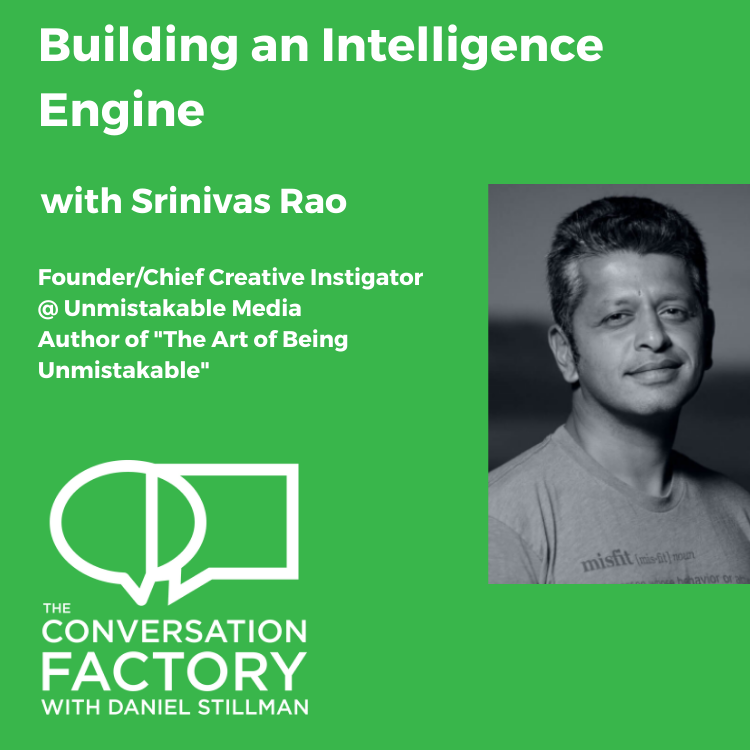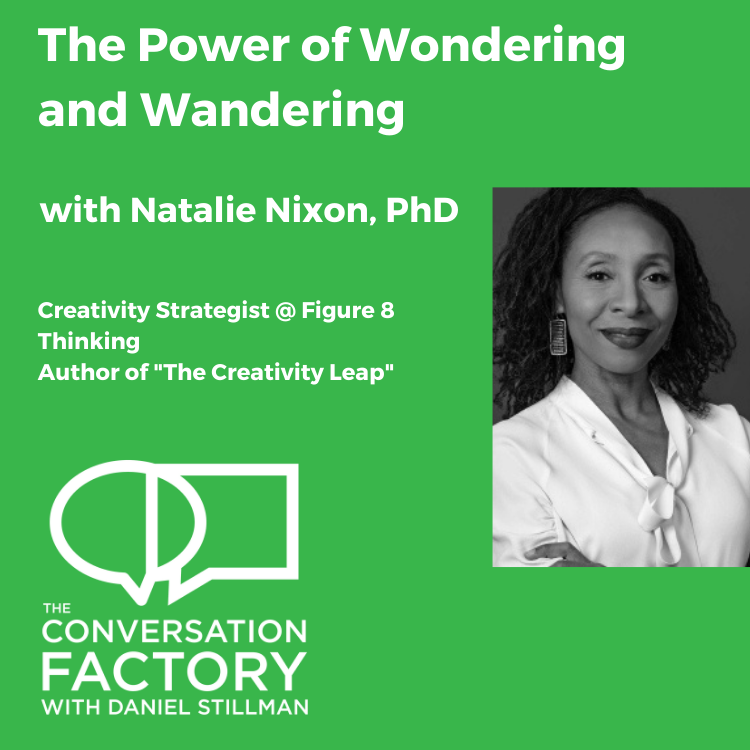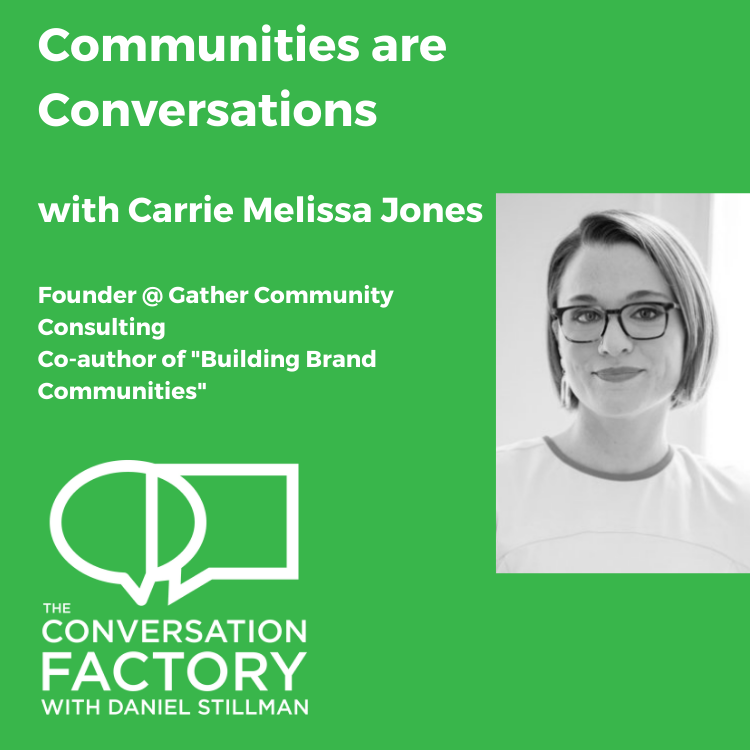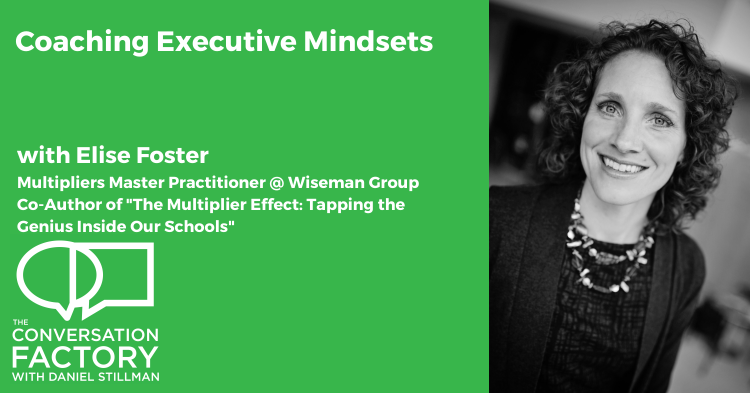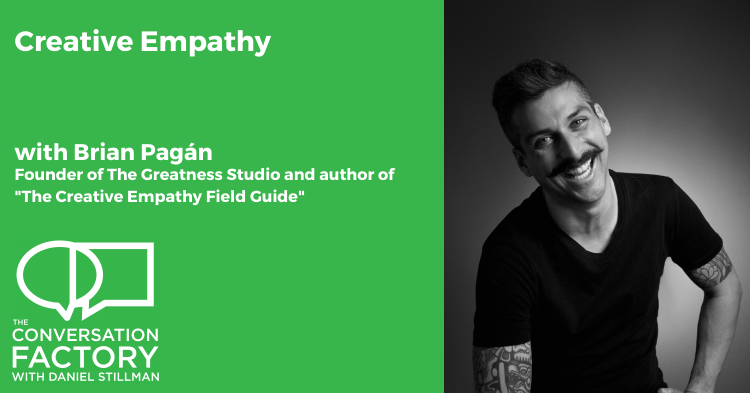Today, I sit down for a conversation with *my coach* Robert Ellis, about his new book, Coaching From Essence.
Robert has been described as “one of Silicon Valley’s best-kept secrets” and has been coaching leaders at startups, mid-stage companies, Fortune 500 giants, and nonprofits for over 30 years. Robert has taught leadership and coached entrepreneurs at Singularity University and developed Level UP, the leadership curriculum for the Global Startup Program, and taught leadership courses at Stanford University. We met through radical serendipity and I’m grateful for the generosity and grace Robert has coached me with. All of his teaching materials are now publicly available on his free circle community and on youtube.
Robert’s book is like sitting in a fireside chat with Robert, absorbing his profoundly wise and profoundly simple approaches to coaching. Sometimes, a new idea can feel so true that it lands like common sense - all the pieces fitting together so seamlessly and effortlessly. Roberts’ metaphors, stories and models hit like that - like powerful truths you knew all along.
Robert’s visual models help ground a coaching conversation, make it easy to follow along, and make the conversation incredibly sticky. And literally every time I’ve drawn one of these diagrams for a client, it lands with them and becomes a new metaphor for thinking about their challenge and their path forward.
This book isn’t just for coaches who want a more effortless and human approach to doing this work, it’s for anyone who wants to be deeply helpful to their clients, their teams, their organization, and to lead conversations in a more impactful way.
Coaching from Essence is based on the radical idea that everyone has an essence, and that, when we work from it, we can effortlessly create value and impact. Coaching from essence works both ways - the coach coaches from *their* essence, their natural approach…and the coachee is coached to work from their *own* essence - their own natural approach. We’re not telling people how to be. We are here to help them remove the obstacles that get in the way of them finding their own way.
According to Bill Gates, everyone needs a coach.
I would flip this suggestion on its head and say that at some point in everyone’s lives, accessing a Coaching from Essence mindset can be a generous, powerful and transformative way to help someone in our lives.
Some of us choose to make coaching our life's work, but Coaching from Essence is a powerful, generous and transformative approach to helping people that everyone can (and should?) access at the right moment for the right person.
Robert Ellis is the embodiment of what he teaches - he is a generous, powerful and transformative coach who I’ve had the pleasure of working under for several years. I’m so glad this book is finally out in the world so that everyone can have the experience of working with him.
Links, Quotes, Notes, and Resources
https://coachingfromessence.com/
Coaching from Essence, by Robert Ellis
Minute 1
Daniel Stillman:
I love that you quote Dolly Parton, I think she's under-quoted, and there's this beautiful quote about, "Find out who you are, and do it on purpose." And I'm curious, if you can put that in context for you. Who are you, and what is it that you do on purpose?
Robert Ellis:
What I do on purpose, is I help people create things. So the book is called Coaching from Essence, and briefly, the idea behind that is, I believe that everyone has an essence, which I think of as, everyone has a way of being valuable in the world without any real thought or effort on their part.
Or another way of thinking of it, a shorter way of thinking of it, is just that everyone has a way of being good.
And so I think, what Dolly Parton is talking about is find out who you are, find out what your essence is, find out why you're here, and what you can contribute naturally, and do that on purpose.
And what most of us do, is we do something else. I know I spent the first 60 years of my life doing something else, trying to be someone I wasn't, because I thought that would earn me more money, or get people to love me, or help me survive, or get status, or something like that.
And so what Coaching from Essence is really about, and what that quote means to me, is find out who you are naturally, what do you naturally good at? Well, what do you naturally have to offer the world? And trust that if you create a life out of that, you'll actually create a, not only be more successful in all of the usual terms, but you'll be happier and more fulfilled.
Minute 3
Robert Ellis:
I have a particular way of thinking about leadership, as you know, but kind of the short version of it is, that a leader is someone who can help people navigate through the unknown, to something better than they can imagine when they leave, wherever they start. And one of the best ways to help people navigate the unknown, is to coach them.
And coaching is really just a way of helping someone find out what their essence is, and begin to create from that, but also how to go on a quest, or how to navigate the unknown to create some something, to create more possibilities than they would otherwise have available.
Minute 17
Robert Ellis:
Leadership is, if you really want to live an adventurous life, you open yourself up to the possibility that the universe knows better than you what you could create, what's possible, and so you go on a quest to find out what's possible. You aim for B, but in this case, B is the best thing that you can imagine, and you conduct experiments, you try different things, and that's how you learn and grow.
Minute 18
Robert Ellis:
Growth to me is also not necessarily bigger. It's better, more congruent, more resonant, more authentic, more aligned with who I am. The more I create a life that is more resonant, congruent, and aligned, the more fulfilled I am, the happier I am.
Minute 41
So the futurosity continuum, and the reason it's called the futurosity continuum, is that, basically, what we're trying to describe is, what is your stance toward time? Are you creating from the past, or are you creating from the future?
Okay, so the continuum goes from the past to the future, and it starts with reactive. Reactive, meaning, something happened already and now you're just reacting to it, and you're putting out fires, or you're just in problem-solving mode. You're just reacting. You're not in control. You're just reacting to things that have already happened, so that it's very much, you're trying to manage the past.
Daniel Stillman:
Which is a really hard thing to do, by the way, given that it's already happened.
Robert Ellis:
It's a hard thing to do, right? Exactly.
So now, you're trying to fix the past, okay? You're a fixer, if you're reacting, or you're proactive.
Proactive is just, so something has happened often enough that you finally catch onto it, and you say, "Okay, let me see if I can avoid that happening again." That's proactive, but if you're reactive or proactive, you're still responding to the past, so you're what I call a fixer. That's a fixer.
After proactive is opportunistic. Once you start to create from the future, in other words, once you start to move towards something you think you want, once you start creating, you will create all kinds of possibilities. Some of which, will be aligned with your quest. They'll be directionally appropriate for what it is you're pursuing, and others that are shiny objects, they're distractions. And this is one of the problems that leaders and entrepreneurs, especially, can fall right to. So, opportunistic, but at least now you're moving toward the future. You're creating possibilities, that didn't exist before, that might lead to something good.
Strategic. The way I define strategic, is you're intentionally setting about creating a future of your own choosing. So you have an idea of what you want, and now you're taking action to create what it is you think you want.
And again, if you're on a quest, you don't know it's possible, but you have an idea of the best thing that you can imagine, so being strategic, is intentionally taking steps to create something, the best thing that you can imagine. Okay.
Then beyond strategic, is emergent, which is, now, you're in conversation with the universe. In other words, you're paying attention to what results you're getting, what response you're getting, and so you have to pay attention to weak signals. You're noticing just what's showing up for you, and you're seeing whether or not some of these things, whether or not you're creating possibilities now, that are potentially better than you might have entertained before.
So the difference between emergent and opportunistic, is that opportunistic is kind of random, and emergent is things are responding to what you're putting out. You're more intentional.
Summary
(6:49) - Robert explains that he helps people create things from their essence and discusses the importance of coaching for leaders in navigating uncertainty and creating more possibilities
(23:51) - Robert defines growth as becoming more resonant, congruent, authentic, and aligned with who you are, rather than just getting bigger
(32:13) - Robert talks about the balance between path-like and quest-like approaches in organizations, and the need for experimentation and learning to avoid being outpaced by competitors
(34:28) - Robert discusses the antidote to self-interest, status-seeking, scarcity, and survival, which he sees as essence, abundance, service, and trust. He emphasizes the importance of giving oneself away and trusting in one's natural abilities and creativity.
(45:40) - Daniel introduces the Futurosity Continuum as a model for navigating uncertainty and creating from the future
(47:36) - Robert discusses the ideal curve of spending more time on strategic and emergent thinking, with most organizations and startups spending more time on reactive and proactive thinking.
(1:00:13) - Robert explains that the purpose of his work is to help individuals and organizations express their essence and create something meaningful that improves the world
More About Robert
Robert is an executive coach and the founder of Futurosity and the Coaching From Essence training program for executive coaches.
Robert has over 30 years of experience working with global companies—spanning startups, mid-stage, Fortune 500 giants, and non-profits— guiding leaders to take their impact to the next level at any stage of growth. His proven strength in coaching entrepreneurs and CEOs to become better leaders, think more strategically, create high-performing teams, foster future-friendly cultures, and deliver compelling presentations—including several high-profile IPO roadshows—has earned him praise from one client as “one of Silicon Valley’s best-kept secrets.”
He’s taught leadership and coached entrepreneurs at Singularity University, and developed Level UP, the leadership curriculum for the Global Startup Program.
He was one of the original coaches for the Nasdaq Milestone Maker program, helping late-early to mid-stage entrepreneurs grow their businesses to the next level.
He also taught Facing Challenge, Navigating Change: Leadership and The Hero’s Journey, an 8-week course at Stanford University using Joseph Campbell’s Hero’s Journey as a framework to explore mindsets and skillsets for leading yourself and others on a heroic journey in business and in life.
Full Transcript
Daniel Stillman:
I will welcome you, officially, to the Conversation Factory.
Robert Ellis:
Thank you.
Daniel Stillman:
Robert, thanks for being here.
Robert Ellis:
I'm thrilled to be here, Daniel. It's always nice to have a conversation with you.
Daniel Stillman:
So where shall we begin? I feel like I was leafing through the early copy of Coaching from Essence, and I love that you quote Dolly Parton, I think she's under-quoted, and there's this beautiful quote about, "Find out who you are, and do it on purpose." And I'm curious, if you can put that in context for you. Who are you, and what is it that you do on purpose?
Robert Ellis:
What I do on purpose, is I help people create things. So the book is called Coaching from Essence, and briefly, the idea behind that is, I believe that everyone has an essence, which I think of as, everyone has a way of being valuable in the world without any real thought or effort on their part.
Or another way of thinking of it, a shorter way of thinking of it, is just that everyone has a way of being good.
And so I think, what Dolly Parton is talking about is find out who you are, find out what your essence is, find out why you're here, and what you can contribute naturally, and do that on purpose.
And what most of us do, is we do something else. I know I spent the first 60 years of my life doing something else, trying to be someone I wasn't, because I thought that would earn me more money, or get people to love me, or help me survive, or get status, or something like that.
And so what Coaching from Essence is really about, and what that quote means to me, is find out who you are naturally, what do you naturally good at? Well, what do you naturally have to offer the world? And trust that if you create a life out of that, you'll actually create a, not only be more successful in all of the usual terms, but you'll be happier and more fulfilled.
Daniel Stillman:
Yeah. Why is coaching a useful modality? Both for leaders to utilize for themselves, but also to use for their teams, and their organizations? Like why coaching, rather than other ways of helping in a conversation, for lack of a better word?
Robert Ellis:
Well, I think that coaching is one of the most important skills for any leader. I have a particular way of thinking about leadership, as you know, but kind of the short version of it is, that a leader is someone who can help people navigate through the unknown, to something better than they can imagine when they leave, wherever they start. And one of the best ways to help people navigate the unknown, is to coach them.
And coaching is really just a way of helping someone find out what their essence is, and begin to create from that, but also how to go on a quest, or how to navigate the unknown to create some something, to create more possibilities than they would otherwise have available. And so coaching is a way of being, which creates more possibilities.
So it's important for leaders, it's the reason I love it, is because it's a form or a context. People can enter into a conversation with me, as a coach, and there's an understanding that we're in conversation in order to create something different than what they already know or have, so it opens up tremendous possibilities, and that's exciting for me.
Daniel Stillman:
So navigating uncertainty.
Robert Ellis:
Yes.
Daniel Stillman:
How does coaching someone help them navigate through uncertainty, rather than, I think, what many people want when they're in uncertainty is, tell me how to be, tell me to think, tell me what to do. We all have a feeling of wanting a playbook, a handbook, a path when we're in uncertainty. There is a tendency, and you could point it to patriarchy, or fear. I mean, I don't know what you would pin it to, but there is a move in many of us to say, to grab for the handrail of certainty, in uncertainty.
Robert Ellis:
Yes. Yes. Well, the way I think about it is, first of all, we're all taught, what I think of as, the unconscious curriculum, we're all taught what will make us happy, is self-interest, status seeking, scarcity, and survival. And so if you're creating from self-interest, status seeking, scarcity, and survival, there's a lot of fear there.
And so, the way I think of it, sometimes, I'll draw this out for a client. I'll say, "All you're trying to do is get from A to B," and I put a dot under A, and a dot under B.
And when you're looking at a piece of paper with A and B, with these big bold dots underneath them, they look kind of like planets.
Daniel Stillman:
Yes.
Robert Ellis:
And so A is a little bit like earth, and B might be like the moon. Well, the earth has a lot more gravity than the moon, if you're on earth, and so, one of the things that keeps us wanting to be in a place where we know, is that it's safer.
So I agree with you, part of it is this sort of curriculum we've been taught about what will make us happy, is we cling to self-interest, we cling to what we think will help us survive.
And then there's fear. And there are some specific fears, that tend to come up when someone tries to navigate uncertainty. There's, what I call, thresholds, silliness, trust, sanity. The most important threshold is the love threshold, which is that we're all afraid that if we really pursue what we want, we'll discover that we're not worthy, not lovable, there's something, we don't deserve it.
Daniel Stillman:
Yeah.
Robert Ellis:
So to navigate the unknown, we have to be willing to go on that journey, and go through those thresholds, and escape the earth's gravity. We have to escape from our comfort zones, and be willing to go where it might be a little bit uncomfortable.
And so, part of coaching, is to support that. People usually come to me and most coaches, I think, with a problem, looking for a solution. And so we start there. We create some value, we help relieve some of the tension. We find some strategies for making the current situation more tolerable, but that's not a very big payoff.
And so when someone experiences some movement from where they've felt stuck, or where they've felt burdened in some way, then the invitation of coaching is, "Well, now let's see what you really want to create, and let's go on an adventure."
What could be possible for you? What do you really dream of? What's your longing?
And so that's the invitation of coaching.
Daniel Stillman:
In a way, I love that you're removing all the next questions I was going to ask, but bleeding into them, which is perfect.
This is one of the reasons why, I think one of your quotes that is one of my favorites is that, "All life coaches aren't executive coaches, but all executive coaches are life coaches."
And the idea that if we're going to create something that we really, really want to bring into the world, if we're going to go into uncertainty, if we're going off the beaten path, if there's really an adventure, we're going to hit some roadblocks.
Robert Ellis:
Yes.
Daniel Stillman:
And the deepest of those roadblocks is, who the hell am I to do this? And that often comes up. So then what is the boundary, because you and I are not therapists?
Robert Ellis:
Right.
Daniel Stillman:
Right. When we are in a coaching relationship, what do you feel like is the right way to approach things like the love threshold, which is always there?
Robert Ellis:
Yes. Well, so the first thing to understand is that, we talked briefly about essence, everyone has a natural way of being in the world that's valuable, without any thought or effort on their part. That's essence.
But we live in a world of form. All of the material things around us, my desk, my computer, it's surrounded by forms, right?
Thoughts are forms too. They're thought forms, our beliefs, our identity, our values, those are also all forms. Coaching is a form. By form, I mean that, we have a certain idea of what coaching is.
It's a kind of conversation that's different from other conversations. It's different, for example, from therapy. Coaching can be therapeutic, but it's not therapy. Therapy is a different form. They're different. There are different boundaries, different agreements about what happens in a conversation with your therapist.
But for me, the only criteria for whether or not I can talk about something with a client, is really two things. Number one is do I have permission? And two, is it helpful?
So the quote that you mentioned, "Not all life coaching is executive coaching, but all executive coaching is life coaching." What that means is I believe that we can't separate who we are personally from who we are professionally, so just because you're an executive, and just because you're coaching someone-
Daniel Stillman:
You can, but there are costs to doing it. Let's speak. Let's speak.
Robert Ellis:
Exactly. There are people who try to do that, but it doesn't work very well, and it's an illusion, I think.
Daniel Stillman:
Why not? Why doesn't it?
Robert Ellis:
You always bring yourself.
Daniel Stillman:
Why is it an illusion? Can you peel back to a little earlier on then?
Robert Ellis:
Oh, it's an illusion, because we're not ChatGPT, we're not robots, we're people. We have feelings, we have blind spots, we have history, we have background, we have beliefs, we have identity, we have values. We are human beings, and we bring that to work whether we believe that or not.
Daniel Stillman:
Yes.
Robert Ellis:
And I think it's actually disastrous if we don't acknowledge that, and don't honor it. And the evidence is, we're surrounded by the evidence of that. If you look at the world, and you see all the problems that we're facing, I think many of them are caused by the fact that we try to separate our humanity from our activity, what we're creating.
So we bring all of us to work, and that's why, if you are an executive coach, and I'm an executive coach, I'm not a life coach, meaning that I don't just work with people who are trying to improve their lives. I work with people who are trying to create things, that have the potential to impact many people.
And so my work is to help them personally.
I work with people who are trying to create something that's so aspirational, it requires a personal transformation. In other words, they're trying to create something that, as they are now, they won't succeed. They need to grow into the possibility of what they're trying to create. So that's how I think about it.
Therapy is different. I'm not a therapist, and if I feel like someone needs therapy, I'll refer them to a therapist, but in the meantime, I may have a conversation with them that may be very therapeutic, and that it can be helpful on a personal level, as well as a professional level.
Daniel Stillman:
Yeah. I'm wondering if we can, this is something that I've, I myself have, I would say, have worked to navigate, to thread the needle in my own coaching between the idea that essence, that everyone has a way of being that is natural and good, that if they can release all the barriers they have, that something will be unleashed, with the growing into.
There is this idea of growing into something more. And I feel like there can be this fundamental tension from, I need to be more, I need to be bigger than, I need to be less than I currently am, I need to tone it down, or be more than I am, with how I am is enough. How do you put those...? Those two things feel intention to me.
Robert Ellis:
So are you asking, how do you navigate when someone comes to you with something that feels too big, or where they're playing too small?
Daniel Stillman:
I think I'm more asking, maybe, more on a meta level of the idea that somebody has an essence, and that means that they are enough. There's also a sense that they want to create something that requires a personal transformation, that they have to grow into something.
Robert Ellis:
Yes. So yes, your essence is enough, but that doesn't mean you can't get better at it. It just means that you, you're good at something, you have something valuable to contribute, and the more you create from that, the easier it is, and the happier you'll be, because you'll be more fulfilled.
Most of us don't think about essence. We tend to discount the things that we're naturally good at. First of all, we're not aware of it, because it comes so easily. We don't pay attention to that.
But yes, if we aspire to something, we may have to grow. A part of growth is becoming more congruent with your essence.
Daniel Stillman:
Yes.
Robert Ellis:
Because, you see, most of us are living and creating from a false persona, which is, I like to think of it as, we're all the solutions to problems that no longer exist. And what I mean by that, is we all have adopted strategies to, again, to navigate life, and to get the attention, and love, and in order to survive. We've adopted strategies that are not authentic, or not congruent with our essence. We've become, to some degree, greater or lesser degree, something that we're not, in order to survive.
So part of growth, is letting go of some of that, and becoming more and more who you are, finding out who you are, and doing that on purpose, creating from that place. But it also is about learning and growing, so we can get better at things that we're already naturally good at, and we may need to learn other things, and we learn and grow as we go on a quest.
Like you said earlier, you can be on a path, or a quest. If you're on a path, you're doing something that you already know how to do. It's fairly predictable, it's not very aspirational or complicated, doesn't require a lot of resource or cooperation.
And so if you're trying to get from A to B, you can just start at B, and reverse engineer it, and it's a project management challenge.
Daniel Stillman:
Yeah.
Robert Ellis:
That's a path.
Leadership is, if you really want to live an adventurous life, you open yourself up to the possibility that the universe knows better than you what you could create, what's possible, and so you go on a quest to find out what's possible. You aim for B, but in this case, B is the best thing that you can imagine, and you conduct experiments, you try different things, and that's how you learn and grow.
Daniel Stillman:
Yeah.
Robert Ellis:
So.
Daniel Stillman:
So.
Robert Ellis:
So.
Daniel Stillman:
Dot, dot, dot.
Robert Ellis:
Does that...?
So that's how I think about it. Growth is, part of growth, is letting go of what doesn't serve you anymore. That's also growth. Part of growth, is learning, and gaining things that you don't already have. That's growth.
And we mostly think of growth in terms of that. How are we going to get bigger? Growth to me is also not necessarily bigger. It's better, more congruent, more resonant, more authentic, more aligned with who I am. The more I create a life that is more resonant, congruent, and aligned, the more fulfilled I am, the happier I am.
Daniel Stillman:
I think that does scratch the surface. So there are a few other layers I want to pull back, and one of them is, how this modality of Coaching from Essence, how you feel it applies throughout an organization.
Because one of the things that comes up in a lot of my coaching work, is an eventual realization of, wow, this is a fundamentally different way of interacting with someone in a conversation to accomplish more than we can imagine, something that's better than can imagine, and many leaders are exhausted from micromanaging, and are not getting the results they want to be getting from their teams.
So I'm curious how you feel, somebody, who isn't a coach, would read Coaching from Essence, and what parts they should be thinking about bringing back to their teams.
Robert Ellis:
So until I write the Book for Leaders, which is the next book that I'm working on, now that Coaching from Essence is published. In fact, I should be getting the proof of the, so the ebook is available now. I think I'm getting the proof of the paperback today, and assuming that it all looks good, I'll hit publish, and it'll be available by the time you post this.
But everything in Coaching from Essence, applies to leaders, or really anyone who wants to create a life they love. Coaching from Essence, is really a loosely connected network of ideas and models, and language for how to create things. That's really all that it is. And everything in the book, with the possible exception of, there's a section called The Red Paperclip, which is about practice building, that will be more of interest to coaches, or consultants, or anyone who is in a service business, and works with clients, but everything else is applicable to leadership.
So we talk about essence. Organizations have essence too. Organizations have, they have a natural way of creating value. Organizations get into trouble when they depart too much from their natural way of creating value, when they try to be something they're not, and that's one of the reasons that most mergers and acquisitions fail, because when you are just motivated by self-interest, status seeking, scarcity, and survival, meaning that you're just trying to make money without any sense of purpose, it's very easy to try to create business, or look for opportunities that have nothing to do with who you are, your core competencies, or anything like that.
So organizations have essence too, and leaders, if Coaching from Essence is a language for creating, what leaders do, is they help people to create things. And like you say, if you don't want to be a micromanager, one of the best things you can do is teach people how to create things.
Another way of thinking about it, this isn't in the Coaching from Essence book, this is what I'm working on in the Leadership Book, is I think of leadership as, most people think of leadership, or entrepreneurship, as sort of climbing the mountain.
Daniel Stillman:
Yeah.
Robert Ellis:
You're constantly overcoming obstacles, and you're climbing the mountain, and eventually you get to the peak where you're going to get to, whatever success it is that you envision.
But really, leadership is about building the mountain underneath you. It's about making, if you're a leader, one of your primary tasks is to make everyone that you work with more valuable. And if you want to grow as a leader, then wherever you are in an organization, and by the way, anyone can be a leader wherever they sit, simply by doing everything they can to make everybody around them more valuable, including themselves.
And so then you think, well, what are the most valuable things that leaders do? What's at the top of the mountain as you move up the mountain, what are you doing more and more and more of?
Well, it really, I think, it boils down to just a handful of things. It's how you think about the future, how you think about impact, systems, strategy, culture, and leadership. And leadership being, how do you do that, how do you help people become more valuable? How do you help people navigate the unknown, on the way to something better than they can imagine?
So that's how I think of leadership, and that's how these ideas can be applied in organizations.
Daniel Stillman:
It's so interesting, because at the core, something my dad used to say, was that, or one of my dad's teachers in truth, but everybody's living their lives according to the precepts of a defunct economist, and every economist has a model of how a person is.
There's this idea of like, oh, we act through self-interest, right? And Adam Smith would say, "Yeah, the whole economy just runs, because it's just all seeking profit, and self-interest." And the idea of how change really happens, and what a person really is, I think is one of the things that's really fundamentally different about your approach, Robert.
Because the idea that everyone has an essence, and it's my job to evoke it, and maybe even provoke it, is very different than the idea that I have to download the correct instructions into everybody in my organization, and build the right matrix, and program them, and it'll just be perfect, and run, if a mechanistic approach, or a computing approach, this is an essence based approach, is a very human approach, and really resonates with one of my perspectives, which is that invitation is the best way to create a change. Not through force, but through somebody wanting to step forward, and that is a very different model for change.
Robert Ellis:
Yes.
Daniel Stillman:
I really haven't thought about, I feel like you've talked about this before in some of our conversations, that organizations can have essence, but it's a profound shift to think, what is the essence here, and how can I evoke it?
Robert Ellis:
Yes, it is a different way of thinking about it. And again, most organizations are very path-like. And by the way, I should, just to be clear here, there's no judgment about this. We are all, both path-like and quest-like. Much of your life is path-like. There should be some parts of your life that are more quest-like, more adventurous, where you're trying new things and learning new things and taking risks. And the same is true for organizations.
Daniel Stillman:
And sometimes, you just want to make tea, and there's a very clear path to making tea.
Robert Ellis:
You just want to make tea, that's great, but then sometimes you want to try something different.
And actually for an organization, organizations, startups are very quest-like, because they don't yet know what works. They're trying experiments. I mean, Lean Startup is a very similar idea. They're trying lots of experiments in order to turn their quest into a path. As you learn, you start turning more and more of your business into a path, so that you can replicate it, and scale it.
But then if you don't continue to have something quest-like, if you're not learning and growing and innovating and disrupting yourself, then eventually, you will lose, because someone will come along, who is more quest-like, and they will improve on whatever it is you're doing, or the market will change, and so you can't rest on your laurels if you're trying to be a successful organization, unless you're doing something that's very much commoditized.
Daniel Stillman:
Who wants to live in that quadrant for very long?
Robert Ellis:
I mean that, it's fine if you do, but I don't think that's very satisfying for most people.
But what you're talking about, yes, many organizations are bureaucratic, they're rigid, there are lots of rules, and policies, and so forth, and as an organization grows, it does need to have a certain amount of that. But that's sort of like, overhead. That kind of overhead, prevents you from being as creative as you can be, so you want to, with all of that, the way I think of it is, you want to have the minimum effective dose. You know, don't want to introduce any more bureaucracy, or policy, or rules than you need to, in order to just prevent chaos.
What you want, is to encourage learning, and growing, and experimentation, and as a leader, nurturing the essence of the people who work with you, so that they're creating the most value with the least amount of effort. And your organization is creating the most value with the least amount of overhead, and distraction.
The other thing, is that we talked about the hidden curriculum, the self-interest, status seeking, scarcity, and survival. Well, what is the antidote to that? I think the anti antidote to that, is essence, abundance, service, and trust.
If you start living your life from essence, what you discover is that you actually have more to offer than you thought. You actually have something of value. You're here to create something that will be helpful.
And really, to me, a meaningful life is, you give yourself away. We're all here to give ourselves away, to express as much of our best selves as we can. And so the more you get in touch with your essence, and the more you're creating from who you are, and again, that's individual, or as an organization, the more you realize how abundant you are, and the more you want to give yourself away, which means you want to serve, you want to create things that are actually meaningful and valuable.
And the trust, is really about trusting that if you do that, the universe will support you. And when I say the universe, I just mean that things will work out, because most of us are afraid to be ourselves, because we're afraid that things won't work out if we don't trust ourselves, or our intuitions, or our natural abilities, or creativity. There's so much pressure to become something we're not. We're being told what we're supposed to do, and if you are trying to create from that, it's very difficult.
Daniel Stillman:
Yes. And I think, one thing that people who are listening to this should, another reason to read the book, trust is one of the thresholds.
Robert Ellis:
That's right.
Daniel Stillman:
Literally, just in a conversation with this morning with one of my clients, laying out the thresholds, and being clear what isn't in the way, and what is still in the way, is really powerful, because I've seen clients get caught at the silliness threshold, or the sanity threshold.
But trust and love are very easy hook points, but not always. Sometimes it is actually, I don't actually know how to do it, and that's fine.
Robert Ellis:
So you're talking about the threshold. Since we're talking about it, just briefly to explain what we mean by that.
The silliness threshold is often the first one that comes up. When I'm talking to someone, and I'm asking them, so when someone comes to me, the first thing that I try to do, is create some value around whatever presenting problem they have.
But then I ask them, "Great, so what would you like to create? So let's say, this wasn't a problem, and you could create anything you wanted. Let's stream together. What would be possible for you? What would you want to create? What are you longing for?" And they'll often tell me some version of, some smaller version of their dream. I think of it as sort of like a bonsai dream.
And nothing against bonsais. I think bonsais are beautiful, but they're beautiful miniature versions of big trees.
Daniel Stillman:
It's just not a redwood.
Robert Ellis:
What's that?
Daniel Stillman:
It's just not, they're not redwoods.
Robert Ellis:
So I want to know, what's the redwood, what's the real dream the person has? Not the dream that their spouse wants, or their parents want for them, or their friends, or their colleagues, or their bosses, or whatever, but what did they actually long for?
Daniel Stillman:
Yeah.
Robert Ellis:
And I often know when I'm getting to the real dream, because they'll tend to laugh, and discount it. That's the silliness threshold.
Daniel Stillman:
Yeah.
Robert Ellis:
It's the fear of embarrassing themselves, or they'll get laughed at, or rejected, or they have a dream that, because it's real, it's a little bit tender. It's something they actually care about, and so they feel a little vulnerable, the more they talk about it. That's the silliness threshold.
So a lot of times, we stop ourselves from doing what we need to do, because we're just afraid to be embarrassed, or what if somebody judges us, or rejects us, or whatever it is.
But then there's the trust threshold... Then there's the knowledge threshold. By the way, these can happen in any order, but often they happen in this order. Then the knowledge threshold, I don't know enough, or I know too much. I can give you all the reasons why something won't work.
Daniel Stillman:
I have to know X, in order to get started with Y.
Robert Ellis:
Everything. And you know my philosophy is, begin before you're ready.
Daniel Stillman:
Yes.
Robert Ellis:
You don't have to know. If you wait until you know everything, you'll never start, because it's impossible to know everything.
Daniel Stillman:
Well, so this is just, if we do do a parenthetical offsite, I wanted to talk about evocation and provocation, probably because I see those as universally applicable leadership skills, not just coaching skills, and that is a provocation to propose to someone, that they can begin before they're ready, is a provocative question.
Robert Ellis:
Yes.
Daniel Stillman:
Right? The questions you're asking when you say, "Well, what's your real dream?" You're trying to evoke a bigger dream from them.
Robert Ellis:
Yes.
Daniel Stillman:
Telling somebody that, that's a bonsai dream, is provocative.
Robert Ellis:
Yes.
Daniel Stillman:
It's a provocation. This is maybe where we go back to, use of self, in the coaching conversation. I'm looking at these two dials of evocation and provocation, and I think it's possible to turn them to 11, and maybe get some noise, some feedback.
Robert Ellis:
Yes.
Daniel Stillman:
That you're pushing someone a little harder, or as our friend Vanessa would say, taking them to your edge, not to their edge.
Robert Ellis:
That's right?
Daniel Stillman:
Which may be your ethos as well.
Robert Ellis:
You want to be careful about, when you're provoking somebody, you want to be careful that you're not doing it out of your need, and you're really being sensitive to where the client is.
So provocation, I'll talk about provocation in a minute, but the way I think of it is, I never push anybody. What I tell people is, "Listen, I'm going to be right with you right here. I'm right behind you. I'm supporting you, and if you stop, I'll bump into you." That's a provocation.
So there are degrees of it. If you think of it as a continuum, one end of the continuum, is what I think of as a disturbing question. I just ask a question that might be a little uncomfortable for somebody. And then a provocation is there's a continuum where it gets a little bit hotter.
And then if you were to graph how much heat you apply, and there's kind of a curve, a disturbing question is low heat, and a real provocation is higher heat, the Y axis is trust.
Daniel Stillman:
Yes.
Robert Ellis:
So if I don't know someone very Well, I won't be very provocative, usually. I might ask a disturbing question.
Daniel Stillman:
High trust, high heat, is, you're still in the safe zone.
Robert Ellis:
High trust, high heat.
Daniel Stillman:
Low trust, high trust.
Robert Ellis:
So when I have trust, that can be a recipe for disaster.
But one of my very intentional aims is to create high trust with my clients. That's critical to doing deep, powerful work as a coach. So I do everything I can to let my clients know that they can trust me, and once I've built trust, then I can be more provocative.
So let's just talk about what we mean by evocation and provocation. Much of coaching, or much of the way that many coaches think of what coaching is, is that it's evocation, right? It's asking good, open-ended questions, using your curiosity, doing active listening, and so forth, and drawing the client out.
Daniel Stillman:
Tell me more about that.
Robert Ellis:
Yeah, tell me more about that.
And based on the idea that the client already is, I forget the phrase, full, and complete, and has all the answers and everything, but I don't really subscribe to that philosophy.
But yes, we're all whole, but you know something I don't know, and I know something you don't know, and so, there's nothing wrong with me giving you some things to think about that you wouldn't, would not otherwise occur to you, and I do that as a coach. Some people call that advice. I don't really think of it as advice, because I can't tell anyone what to do, but I can offer many things, often, valuable and helpful things that someone can think about, and then they can make their own decision.
So a provocation is an invitation. It might be a challenge for someone. It might be a statement of belief, that I believe they're capable of something that they're maybe not sure they're capable of, and so I encourage them to conduct an experiment.
When someone comes to me, and they tell me their dream, my role as a coach is to believe them, and to remember. And so when they forget, I remind them, "Hey, you have this dream, and I believe you. You told me you had this dream, and I believed you. And furthermore, I believe that you're capable of creating, if not that, something better than you can imagine. And so I encourage you to go on that quest, and I encourage you, here's some experiments you could try."
So that's a provocation.
Daniel Stillman:
Yeah.
Robert Ellis:
It's a challenge. It might be a challenge to their beliefs, or their identity, their values, or their idea of what they're capable of.
Daniel Stillman:
Yeah.
Robert Ellis:
Yeah.
Daniel Stillman:
Well, that was a long parenthesis. I think we may have covered the basics of the thresholds, and people, they should just buy the book, and they should just read it.
So I don't want you to have to-
Robert Ellis:
They're all in the book.
Daniel Stillman:
I know you're in the mood to give everything away, Robert.
Robert Ellis:
I do. I never sandbag. I never hold back.
Daniel Stillman:
I think, one thing, that's... Another one of your favorite models that I want to bring into the conversation, because it's connected to the idea of navigating uncertainty, way back in the two beats ago, three beats ago in our conversation when you were talking about leadership as creating something better than we can imagine, and paths versus quests, and getting caught in productization versus trying to create something truly unique.
I feel like this goes to one of your models that I find perennially useful, which is the futurosity continuum. And I was hoping you could sketch, we can sketch it a little bit, but where I find it generally very useful for leaders, owners of businesses, is just the realization of the difference between reactive and proactive, and the difference between strategic and emergent. I feel like reactive to proactive, is maybe the basic practice of realizing like, "Oh, wow, there's more." Of course, when people see the continuum, they go, "God, I'm caught here, and I want to be here," and then realizing that there's more layers to creating what they really want to create.
I'm wondering if we can peel back some layers on why it's important to make time for strategic thinking, and emergent thinking, and how we can never get that time if we're caught up just in reactive and proactive thinking.
Robert Ellis:
Yes, I will try to sketch it out. I mean, the futurosity continuum is a visual model.
Daniel Stillman:
And I'll put an image of it in the...
Robert Ellis:
Okay. Okay.
So, again, if you think of a continuum, right? So the futurosity continuum, and the reason it's called the futurosity continuum, is that, basically, what we're trying to describe is, what is your stance toward time? Are you creating from the past, or are you creating from the future?
Okay, so the continuum goes from the past to the future, and it starts with reactive. Reactive, meaning, something happened already and now you're just reacting to it, and you're putting out fires, or you're just in problem-solving mode. You're just reacting. You're not in control. You're just reacting to things that have already happened, so that it's very much, you're trying to manage the past.
Daniel Stillman:
Which is a really hard thing to do, by the way, given that it's already happened.
Robert Ellis:
It's a hard thing to do, right? Exactly.
So now, you're trying to fix the past, okay? You're a fixer, if you're reacting, or you're proactive.
Proactive is just, so something has happened often enough that you finally catch onto it, and you say, "Okay, let me see if I can avoid that happening again." That's proactive, but if you're reactive or proactive, you're still responding to the past, so you're what I call a fixer. That's a fixer.
After proactive is opportunistic. Once you start to create from the future, in other words, once you start to move towards something you think you want, once you start creating, you will create all kinds of possibilities. Some of which, will be aligned with your quest. They'll be directionally appropriate for what it is you're pursuing, and others that are shiny objects, they're distractions. And this is one of the problems that leaders and entrepreneurs, especially, can fall right to. So, opportunistic, but at least now you're moving toward the future. You're creating possibilities, that didn't exist before, that might lead to something good.
Strategic. The way I define strategic, is you're intentionally setting about creating a future of your own choosing. So you have an idea of what you want, and now you're taking action to create what it is you think you want.
And again, if you're on a quest, you don't know it's possible, but you have an idea of the best thing that you can imagine, so being strategic, is intentionally taking steps to create something, the best thing that you can imagine. Okay.
Then beyond strategic, is emergent, which is, now, you're in conversation with the universe. In other words, you're paying attention to what results you're getting, what response you're getting, and so you have to pay attention to weak signals. You're noticing just what's showing up for you, and you're seeing whether or not some of these things, whether or not you're creating possibilities now, that are potentially better than you might have entertained before.
Daniel Stillman:
Yeah.
Robert Ellis:
So the difference between emergent and opportunistic, is that opportunistic is kind of random, and emergent is things are responding to what you're putting out. You're more intentional.
I'll give you an example of that. Coaching from Essence. For me to train coaches was entirely an emergent phenomenon. I never had any intention of training coaches.
I was very happy as an executive coach, and I was very much working on creating myself as a powerful executive coach, and what happened was, I was meeting with some success, and I had a lot of friends who were coaches, and so word got out, and people started asking to meet me for coffee, or lunch, or whatever, because they were either thinking about becoming coaches, or they were coaches, and they weren't very happy with the work they were doing, or they weren't creating the success in their practices that they wanted, and so they wanted to pick my brain.
And so after a few people did that, I thought, "Wow, this is really interesting. This just sort of happened out of nowhere. Maybe I should offer something for coaches."
And I had no idea what that offer would be, but I just posted something on Facebook, and within two days, 21 people signed up for training that didn't exist. See, I began before I was ready.
Daniel Stillman:
You did, and I think there was also some essence there, too, right? There was a hunger to connect.
Robert Ellis:
Yeah.
Daniel Stillman:
You weren't just blindly following signals. It wasn't just opportunistic.
Robert Ellis:
No, no.
Daniel Stillman:
This is-
Yeah, sorry, go ahead.
Robert Ellis:
Well, yes, I mean, I had an idea of my essence, and I had an idea of all the things that I was learning, and I had been developing some of those ideas, and teaching many of these ideas to leaders at Singularity University. I developed and led the leadership track for the Global Startup Program at Singularity University, and some of these ideas were sort of road tested there, but I never had any idea of teaching coaches.
So that was very much emergent.
Now, if you can visualize that continuum, again, that's the X axis, the Y axis is time, energy, and resources. So most people, and most organizations, if you were to plot the curve, it's very high on the reactive, end of the continuum, and very low on the emergent end of the continuum. In other words, most of us, and most organizations, are devoting a lot of their time, energy, and resources being either reactive or proactive.
Daniel Stillman:
Yeah.
Robert Ellis:
They're firefighting, putting out fires, solving problems, and relatively less and less time being opportunistic, strategic, or emergent.
The ideal curve, is probably the reverse. You will always be spending some time being reactive, because we can't always predict the future. There will be problems that we didn't anticipate, and we'll have to respond to those, but ideally, the curve would go the other way, where you're spending more of your time and energy being strategic and emergent. You're intentionally, creating possibilities for yourself.
Most startups, it looks probably more like a bell curve, because they're nothing to react to, since they're just starting. Things aren't emerging yet, because they haven't created anything, so they're being proactive and strategic. They have ideas, and they're conducting experiments, and so most of their time, energy, and resources, goes into just conducting experiments.
Daniel Stillman:
I'll put a sketch of this in the show notes for people to look at while we're talking about this.
Robert Ellis:
Sure.
Daniel Stillman:
I feel like there's never been a time when I haven't drawn the futurosity continuum for somebody, where I don't feel like anybody has the optimal distribution, generally speaking.
Robert Ellis:
Sure, and it's changing all the time. It's always changing.
One of the universal challenges as an executive coach, is that if you're working with leaders, one of the things they're always having to negotiate, is how much their time, energy, and resources being sucked toward the fixer-end of the continuum.
They have a vision for the future, and they're trying to create it, but they're often being pulled for the other end of the continuum, and they're starved for the time, and energy, and resources for creating.
Daniel Stillman:
Yeah.
Robert Ellis:
And so, that is something that we do problem solve around.
Daniel Stillman:
So this is, to go back to one thing you said, and I can't believe we're... The time goes really fast, it's crazy.
The idea that strategic intent, is speaking to the universe, and the emergent space, and the continuum, is listening to what's really going on.
Robert Ellis:
Yes.
Daniel Stillman:
And I think people, the first version of this diagram that you made, didn't have emergent, because strategic, for many executives, feels like this is the pen, this is the ultimate goal, is to be strategic.
Robert Ellis:
That's right.
Daniel Stillman:
But of course, being strategic, means also finding out whether or not the strategy is working, and what the universe really wants of us.
Robert Ellis:
That's right.
Daniel Stillman:
So this idea of speaking to the universe, and listening to the universe, is just, I would love for you to stay a little bit more about that.
Robert Ellis:
Well, yeah. I mean, think about strategy, and strategic planning, the idea of strategic planning is just an interesting one. Let's just say, right?
Daniel Stillman:
Do you want to have one more word? What's the word you really want to use, Robert?
Robert Ellis:
You have an idea of what you want to create, and you're saying what you want to create, so it's a monologue, in a way.
You're saying, "Look, here's the plan, here's what we want it, and here's the plan, here's how we're going to create it." And that's very path thinking.
Now, it can be strategic to do premortem, right? To say, "Okay, we're aiming for this." By the way, I'm not a big believer in OKRs, or things like that, because in my experience, every client I know who uses OKRs, they're so prone to, first of all, to identifying the wrong OKRs, for example, common one might be, how many customers we're going to get.
My point of view is you should just optimize for one customer, or you identify who your customers are, and optimize for each of those different kinds of customers, or those personas.
How many you get, you don't know. You don't know what's possible, so it's not very meaningful to think that, picking a number out of a hat, is going to really inform your action.
So you aim for something, you have a strategy, you have an idea of what you want to create, and you put that out, you ask for that, in a way, but then you have to listen, and learn, and see what response you get, and that's emergent.
So when you are moving toward emergent, you're entering into a conversation, which means that, yes, you have an idea of what you want to create, and you take action based on what you think is possible, but you're very much open to learning, and listening, and observing, and seeing what you get in response, so that you might discover something else that's possible.
That's how you get to something better than you can imagine. That's one of the ways.
Daniel Stillman:
Yeah.
Robert Ellis:
My favorite way is to optimize for serendipity, but-
Daniel Stillman:
That's another conversation.
Speaking of which, I've used up all of the time we have allotted to this conversation.
Robert Ellis:
Oh, no.
Daniel Stillman:
What haven't I... If you can go one more moment, because we're literally on the wire, and I want to respect your calendar, Robert.
Robert Ellis:
Sure.
Daniel Stillman:
What haven't we talked about, that we should talk about. What is the question that I have not asked you, that I ought to have asked?
Robert Ellis:
You haven't asked me, why? Well, we did touch on it. The why. Why is this important? What is this about? Is it about just being more successful, or making more money, or something like that? And we did touch on it.
Obviously, we don't have time to, say, go into the Hero's Journey, but that's such a popular model that so many people talk about, in terms of leadership, and so forth, and I think many people misunderstand what the Hero's Journey is really all about.
The Hero's Journey, is not an individual journey of overcoming obstacles in order to get some boon to elevate yourself. It's not about self aggrandizement. The whole reason for the Hero's Journey, is to get something that is of benefit to the community.
And that's really how I think about essence. Essence is not about becoming yourself, so that you can just entertain yourself and be content. The journey to getting in touch with your essence, and creating a life from your essence, is so that you're giving yourself away. You're sharing your best self with the world, and think about how different the world would be if everybody did that.
So that's really what this work is about. That's what it's about as a leader, and building the mountain, how can you elevate everyone else around you? How can you create a venture that creates value for the world, so that you're doing something meaningful that actually improves the world? That's what interests me.
Daniel Stillman:
Yeah. I think a world where everyone can express their essence, building organizations where people can express their essence, designing meetings, gatherings, spaces where that can happen, is a transformative, that's not a path, that's definitely a quest, and I think it's a worthwhile transformation.
Robert Ellis:
that's right. And as you know, connection is so important, and you're so good at creating connection, facilitating connection, and connection happens through conversations. When we can talk about things that matter, then we can connect at a different level, and we have an opportunity to express more of our best selves, and so, that's why conversations, and facilitation, and coaching, I think, are so important.
Daniel Stillman:
Well, Robert, where should people go to learn about all things, Robert Ellis, to find more about your work, and to find copies of not just this book, but-
Robert Ellis:
Yes.
Daniel Stillman:
The sequels.
Robert Ellis:
Coaching from Essence is now available on Amazon. It was written for coaches, but really, if you're a leader, or an entrepreneur, or you just want to create a life you love, there will be something in the book that will speak to you.
I am working on the Book for Leaders. That'll be next. I'm hoping to have that out by the end of this year.
If you want to know more about my work as an executive coach, you can go to futurosity.com. If you want to learn more about Coaching from Essence, if you're a coach, go to coachingfromessence.com.
And by the way, I should mention that, giving myself away, I have given the entire Coaching from Essence Program away. In fact, I've given three complete programs away that were recorded on Zoom. You can go to Coaching from Essence, and join the Coaching from Essence community, completely free, and you can watch over 100 hours of videos of the entire course, masterclass, client creations, sprints, and connect with a community of over, I think it's around, 400 extraordinary coaches now, so it's all completely free.
Daniel Stillman:
Yeah, you could spend weeks absorbing it, or you could just read the book, which is very handily dandily packaged up.
Robert Ellis:
Or you could read the book.
Daniel Stillman:
Yeah, it's like spending a really nice afternoon with you.
Robert Ellis:
Yeah, I wrote the book, so that you could have it in your hand, but the entire course is available for free. I think the world needs more coaches. I'm trying to facilitate that.
Daniel Stillman:
Well, at every level, in every organization.
Robert Ellis:
Yeah, yes.
Daniel Stillman:
I think.
Robert, you've been exceedingly generous to me with your time today. I love the book. Reading the book, was obviously like taking a warm bath, because I've been exposed to your thinking, and I've been in conversation with you for several years now, but I still loved and enjoyed the book, so I'm really grateful that you made it real. Thank you.
Robert Ellis:
Thank you. I appreciate that.
Daniel Stillman:
Well, I will call scene.

